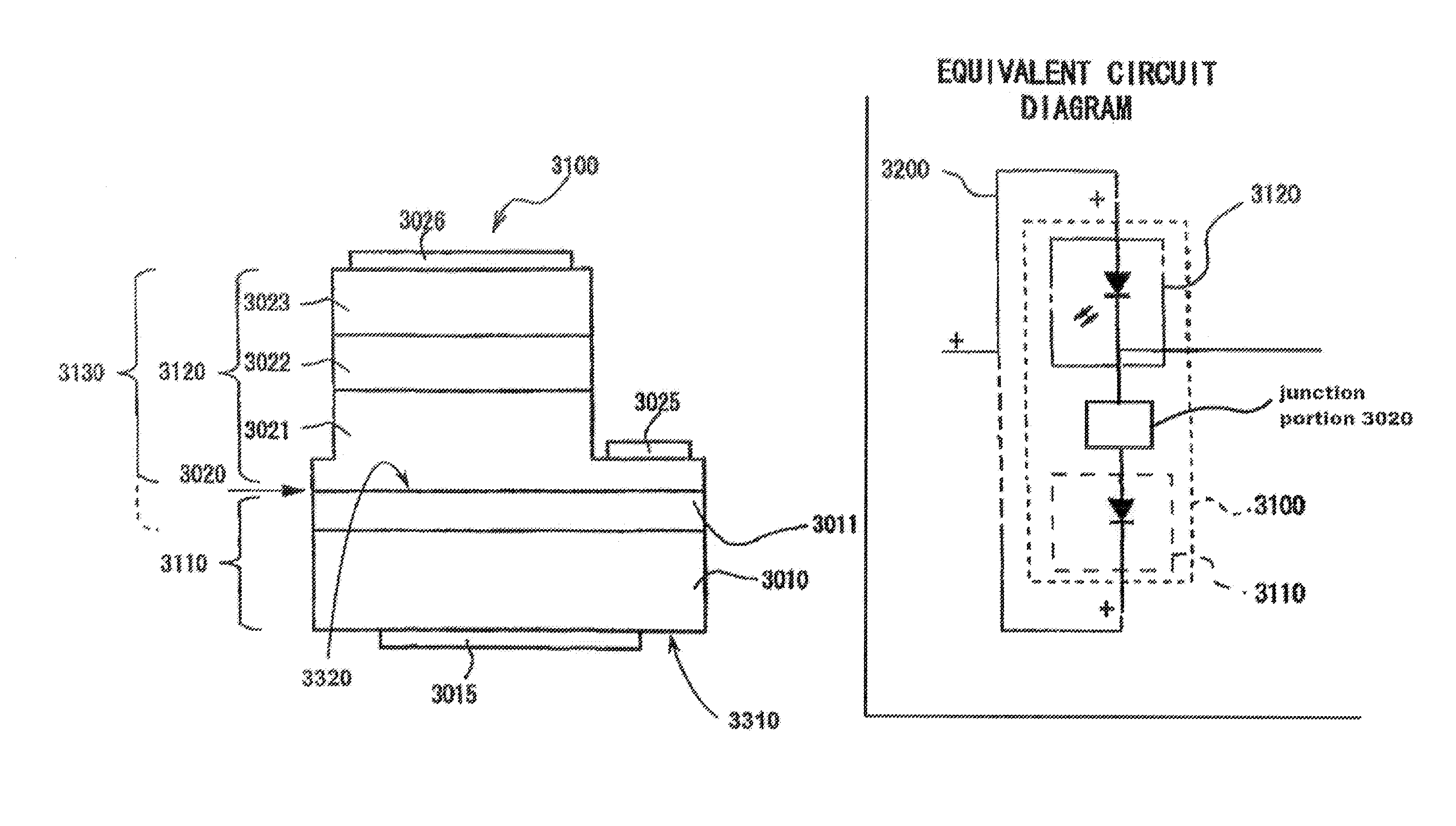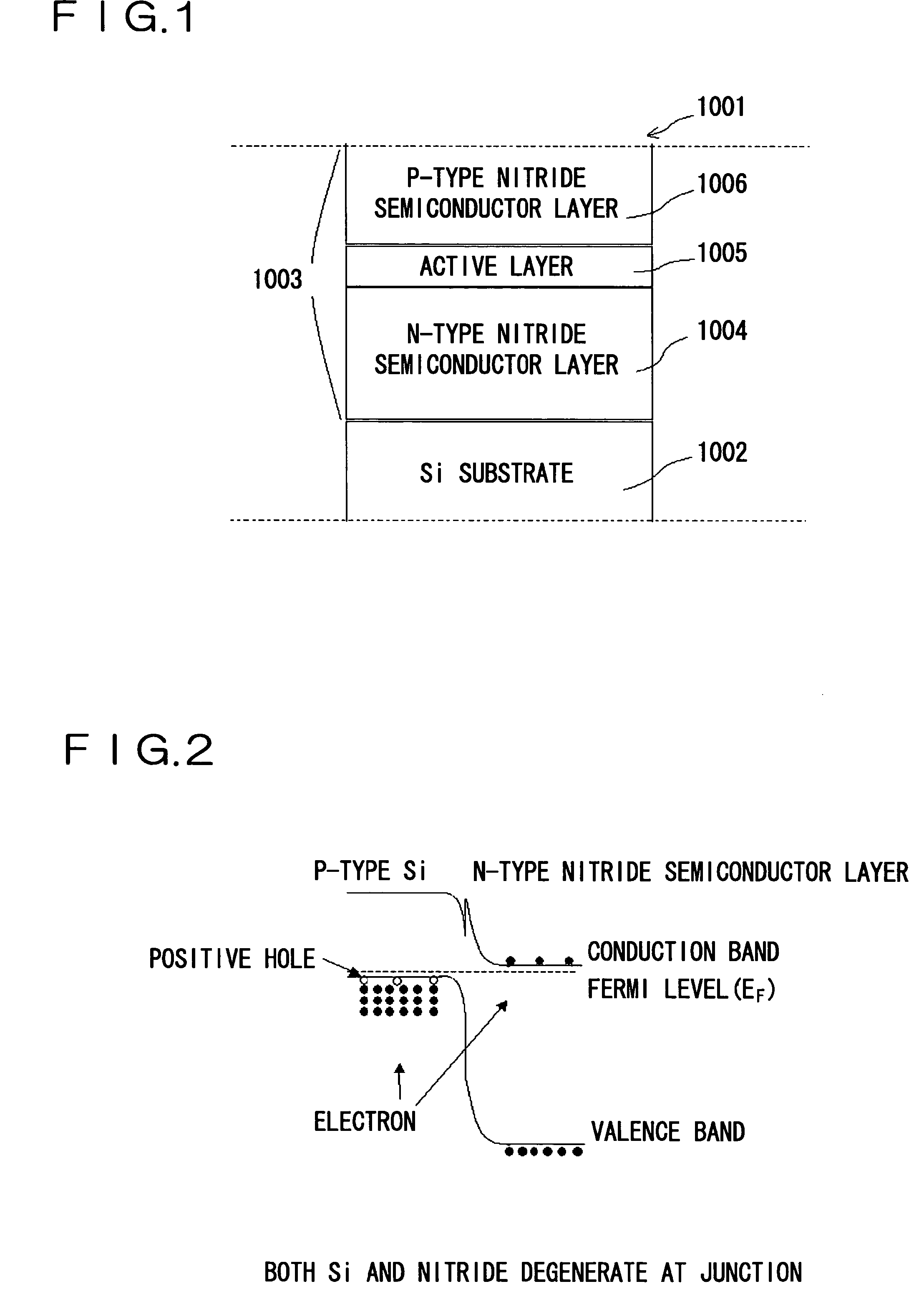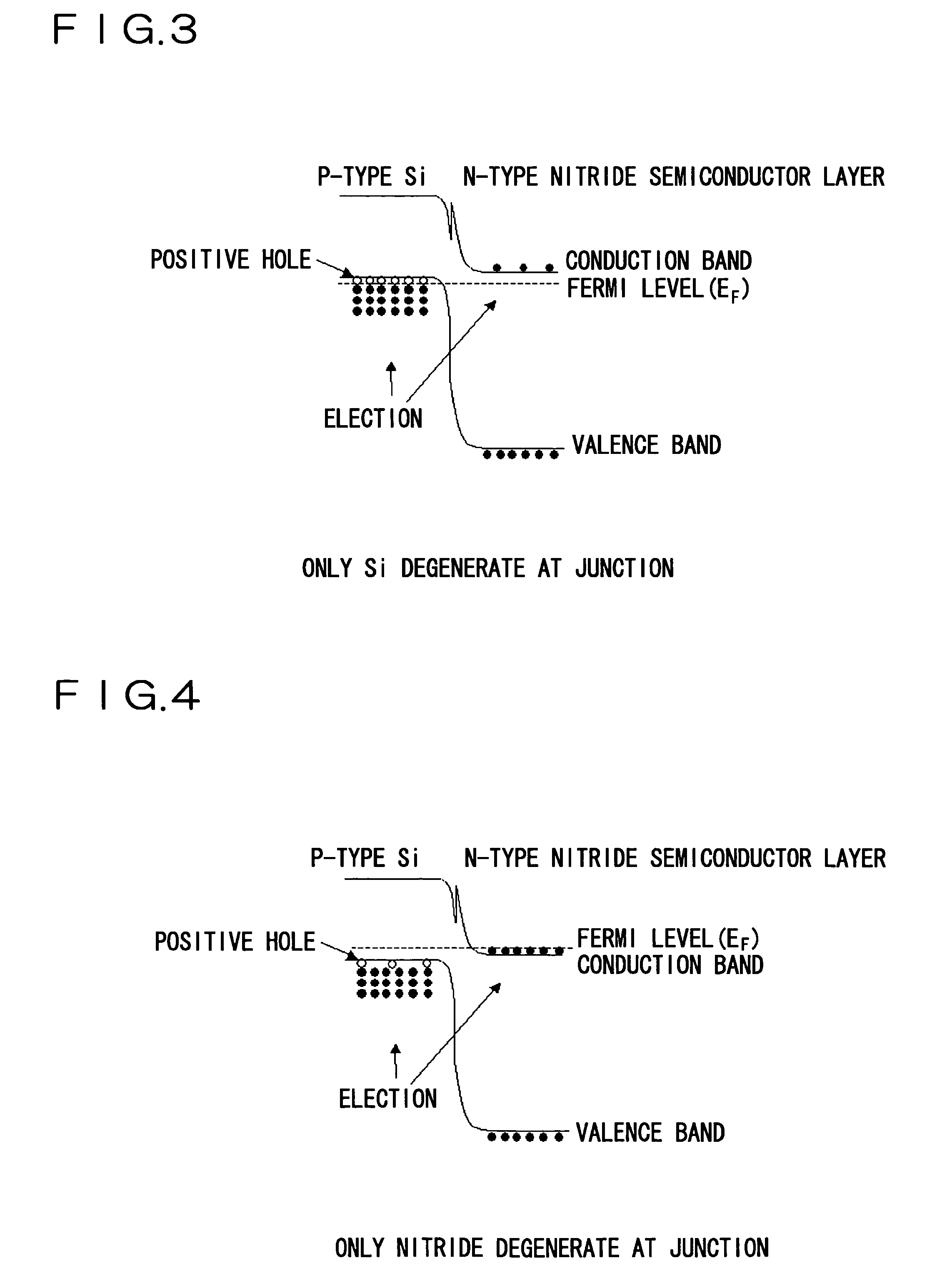Nitride semiconductor element having a silicon substrate and a current passing region
a technology current passing regions, which is applied in the field can solve the problems of difficult to reduce the cost sapphire is high in cost, and the area of nitride semiconductor elements becomes greater, so as to suppress cracking, suppress cracking, and suppress cracking.
- Summary
- Abstract
- Description
- Claims
- Application Information
AI Technical Summary
Benefits of technology
Problems solved by technology
Method used
Image
Examples
example 1
[0293]FIG. 20 is a figure showing a nitride semiconductor element 1001-1 according to Example 1, which is an example of the first embodiment of the present invention.
[0294]In this Example 1, in this nitride semiconductor element 1001-1, the positive electrode 1007 is provided on the side of a p-type nitride semiconductor layer 1006 which is opposite to the Si substrate 1002, while the negative electrode 1008 is provided on the opposite side of the Si substrate 1002 from the nitride semiconductor layer 1006. Since the positive electrode 1007 and the negative electrode 1008 are provided on opposite faces of the Si substrate 1002, accordingly it becomes possible to make this nitride semiconductor element 1001 more compact, as compared with a case in which the positive electrode 1007 and the negative electrode 1008 are provided on the same surface thereof. It should be understood that it would also be possible to provide the positive electrode 1007 on the side surface of the p-type nitr...
example 2
[0296]FIG. 21 is a figure showing a nitride semiconductor element 1001-2 according to Example 2, which is also an example of the first embodiment of the present invention.
[0297]In this Example 2, for this nitride semiconductor element 1001-2, a positive electrode 1007 is provided on the surface of a p-type nitride semiconductor layer 1006, and a negative electrode 1008 is provided on the opposite surface of a Si substrate 1002 from the positive electrode 1007. Since the positive electrode 1007 and the negative electrode 1008 are provided on opposite faces of the Si substrate 1002, accordingly it becomes possible to make this nitride semiconductor element 1001-2 more compact, as compared with a case in which the positive electrode 1007 and the negative electrode 1008 are provided on the same surface thereof. It should be understood that it would also be possible to provide the positive electrode 1007 on the side surface of the p-type nitride semiconductor layer 1006, and to provide t...
example 3
[0299]FIG. 22 is a figure showing a nitride semiconductor element 1001-3 according to Example 3, which is an example of the first embodiment of the present invention.
[0300]In the nitride semiconductor element 1001-3 of this Example 3, a positive electrode 1007 is provided on the opposite side of the p-type nitride semiconductor layer 1006 from the Si substrate 1002, while a negative electrode 1008 is provided over the Si substrate 1002. It should be understood that this positive electrode 1007 may also be provided on the side surface of the p-type nitride semiconductor layer 1006, and the negative electrode 1008 may also be provided on the side surface of the Si substrate 1002; and, even if this is done, it is possible to reduce the voltage in the forward direction (Vf) of this nitride semiconductor element 1001-3. It should be understood that the materials and the sizes of the positive electrode 1007 and the negative electrode 1008, in the structure of the present invention, are no...
PUM
| Property | Measurement | Unit |
|---|---|---|
| electron density | aaaaa | aaaaa |
| electron density | aaaaa | aaaaa |
| thickness | aaaaa | aaaaa |
Abstract
Description
Claims
Application Information
 Login to View More
Login to View More - R&D
- Intellectual Property
- Life Sciences
- Materials
- Tech Scout
- Unparalleled Data Quality
- Higher Quality Content
- 60% Fewer Hallucinations
Browse by: Latest US Patents, China's latest patents, Technical Efficacy Thesaurus, Application Domain, Technology Topic, Popular Technical Reports.
© 2025 PatSnap. All rights reserved.Legal|Privacy policy|Modern Slavery Act Transparency Statement|Sitemap|About US| Contact US: help@patsnap.com



